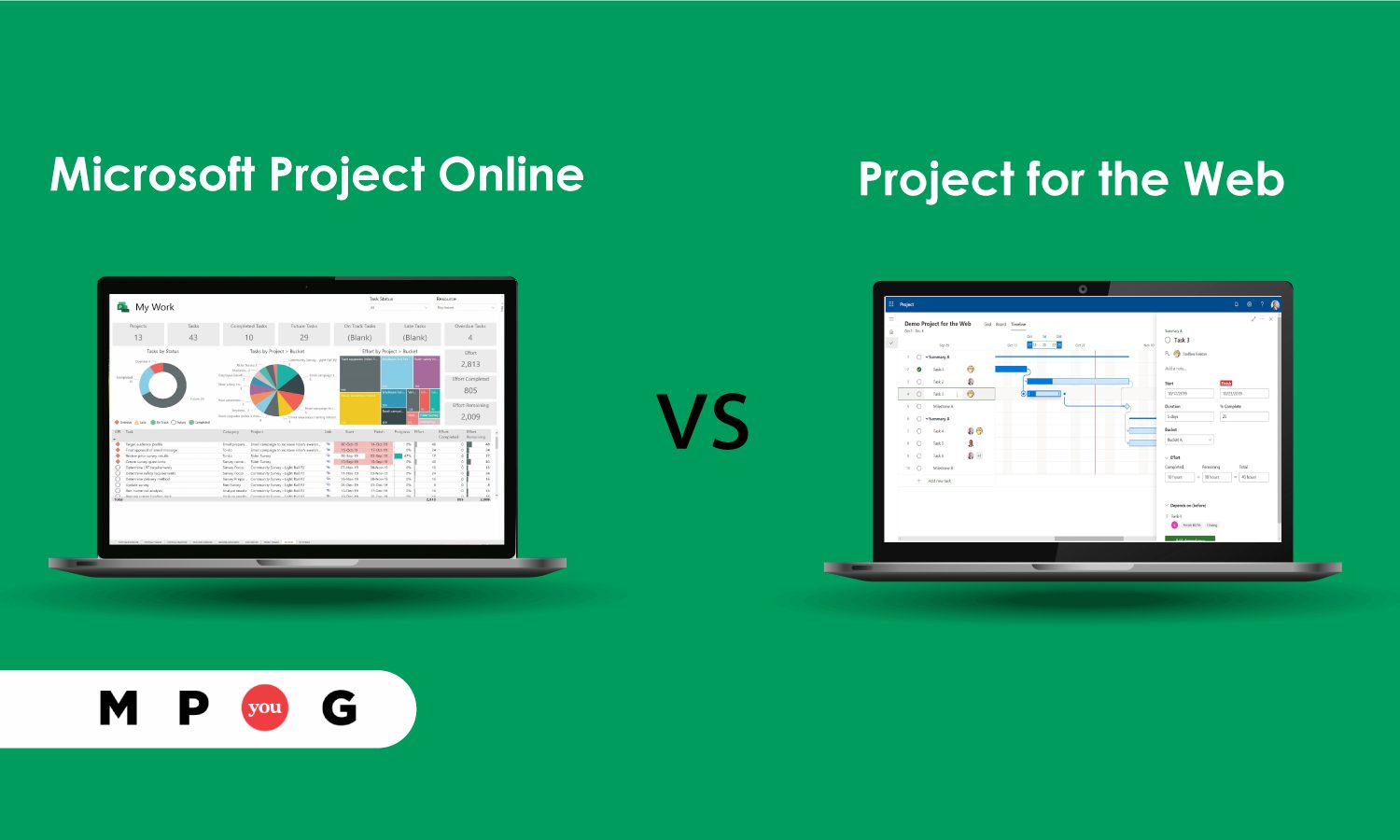What criteria should businesses look at to decide on the Project solution they need? There’s plenty of documentation on the features of each of the various Microsoft Project solutions, but where do you start, what do you need, and what’s the right answer? These are the questions we’re going to explore in this article. Microsoft seems to be pushing strongly towards Project for the web (P4W), but that doesn’t mean that’s the only option. A hybrid approach is likely to be the standard operating procedure going forward.
Project Online vs Project for the Web
Do you have an existing Project system in place? Microsoft has clearly stated that there is no sunset date set for Project Online. They also have said there will eventually be a migration tool from Project Online to Project for the web. That means there’s no rush to run toward Project for the web at this time. In fact, all of your Project Online projects show up and are accessible from the Project for the web Home page. This means you can continue with a hybrid environment and gradually move to Project for the web and/or continue using both. Features are continually being added to Project for the web to eventually bring it up to the Project Online capacity, but new features are not being developed for Project Online. One more important note is that Project for the web is not compatible with GCC tenants, so, for those needs, your option remains Project Online (Reference article here).
Technical Differences
The technical difference between the two is that Project Online is a SharePoint-based platform and P4W is a dataverse-based platform. It changes how you extract data, but it doesn’t change the ability to extract data.
Another consideration is the functionality you need. One example is resource management or portfolio management. At this time, it’s just not available in Project for the web, so, if you need that functionality, Project Online is the easy answer. On the other hand, P4W has features like the Board view, which makes it easy to move tasks around and put them in different buckets.
Differences in security
Security is always critical to understand, and there are differences. P4W allows you to use groups through the Teams app, which is fine if everyone on the team gets the same access. Project Online is based on SharePoint, so the level of permission is much more granular. External users that have a Microsoft account can be invited to share at various permission levels with Project Online.
Difference in Cost
Regarding cost, P4W requires only a Project Plan 1 license ($10/month) compared to the Project Plan 3 license ($30/month). If your project managers like the desktop app, they will still need a Project Plan 3 license, but you can mix and match, so that project staff can use the Project Plan 1 licenses and project managers the Project Plan 3 ones. Note that for resource planning, Project Plan 5 is required, and Project Plan 1 does include Project Online Essentials.
Accessibility
Visibility of all of your projects (either Online or in P4W) are available in one screen on the P4W home page. That means you don’t really need to choose; you can continue using both depending on the project you are working on. Perhaps you use Project Online for client projects and P4W for internal projects. It’s all about coming up with a plan that fits your needs!
Sharepoint Integration
Data doesn’t always fit into the framework of a project management system, and that’s where integration with other platforms comes in handy. Power Automate allows us the flexibility to integrate either platform with SharePoint. In my upcoming webinar, I am going to show you how to do this, but the use case for this example is that there are a variety of contractors that work together on projects. They need visibility into the tasks and progress of each, including dependencies and timelines. Their individual contracts for time and billing are not visible to the other members of the team. As I said, in my webinar, I will show you an integrated solution that:
- Automatically adds the title of the project to a list in SharePoint
- Allows project managers (PMs) to give contractors assignments
- Allows contractors to submit time invoices against those assignments
- Automatically assigns permissions to each assignment and time logs to both contractor and PM
Technically it’s not that complicated, and the real key is to have a clear understanding of what needs to be tracked and where it’s coming from.
Want to explore more about how to integrate Project and SharePoint? I’ll be outlining why integration is important, demonstrating how with Power Automate, and reviewing permissions and security—all in my upcoming session, Automating Information between Microsoft Project and SharePoint. Click the link to register now!








Nate Auchter
P4TW is launched for GCC and 3rd party license resellers are now issuing licenses (P3 etc..) for GCC tenants. See Microsoft’s roadmap here: https://www.microsoft.com/en-us/microsoft-365/roadmap?filters=&searchterms=Project
Nate Auchter
Still great info – meant to give the article a good rating too. 🙂
Lynch Interactive
My experience with GCC was about a month ago and it was with GCC High, I would believe there are differences still between GCC High and GCC, especially since GCC High still does not allow graph api calls. But you are correct, I did not specify. Thanks for helping keep that clear.